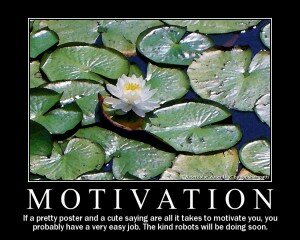 For those of us who have been working with Agile for a while, the values, the principles, the approach, the methods and the practices are almost second nature but for those who start to enter the Agile world, the ramp up can be challenging – especially if you are looking at all of this from a management position.
For those of us who have been working with Agile for a while, the values, the principles, the approach, the methods and the practices are almost second nature but for those who start to enter the Agile world, the ramp up can be challenging – especially if you are looking at all of this from a management position.
After being asked by a few people “Where can I start if I would like to know more about Agile?”, I decided to put together this short list of reference material. There is also a good discussion happening on LinkedIn.
I am missing anything? Is there material you would recommend to managers?
What is Agile?
Agile software development refers to a group of software development methodologies based on iterative development, where requirements and solutions evolve through collaboration between self-organizing cross-functional teams.
The term was coined in the year 2001 when the Agile Manifesto was formulated.
Agile methods generally promote a disciplined project management process that encourages frequent inspection and adaptation, a leadership philosophy that encourages teamwork, self-organization and accountability, a set of engineering best practices intended to allow for rapid delivery of high-quality software, and a business approach that aligns development with customer needs and company goals. (Agile software development – Wikipedia)
“Agile Development” is an umbrella term for several iterative and incremental software development methodologies. The most popular agile methodologies include Extreme Programming (XP), Scrum, Crystal, Dynamic Systems Development Method (DSDM), Lean Development, and Feature-Driven Development (FDD).
While each of the agile methods is unique in its specific approach, they all share a common vision and core values (see the Agile Manifesto). They all fundamentally incorporate iteration and the continuous feedback that it provides to successively refine and deliver a software system. They all involve continuous planning, continuous testing, continuous integration, and other forms of continuous evolution of both the project and the software. They are all lightweight (especially compared to traditional waterfall-style processes), and inherently adaptable. As important, they all focus on empowering people to collaborate and make decisions together quickly and effectively. (Agile 101: What is Agile Development? | VersionOne)
Just what is agile software development? In 2001, a group of methodologists got together to agree on a common set of guiding principles around effective software development. Rather than summarize their agreements here, I’ll point you to their “agile manifesto”.
From a pure definition standpoint, agile is a conceptual framework generally centered on iterative and incremental delivery of working software, driven by the customer. The iterative part suggests that we are repeating, or iterating, a complete lifecycle of development over a short, fixed span of time. With each of these iterations, we ship some working subset, or increment, of features. (A Brief Introduction to Agile — Developer.com)
What is Scrum?
Scrum is an agile approach to software development. Rather than a full process or methodology, it is a framework. So instead of providing complete, detailed descriptions of how everything is to be done on the project, much is left up to the team. This is done because the team will know best how to solve its problem. (Introduction to Scrum – An Agile Process)
Scrum is an iterative, incremental framework for project management and agile software development. Although the word is not an acronym, some companies implementing the process have been known to spell it with capital letters as SCRUM. This may be due to one of Ken Schwaber’s early papers, which capitalized SCRUM in the title.
Although Scrum was intended for management of software development projects, it can be used to run software maintenance teams, or as a general project/program management approach. (Scrum (development) – Wikipedia)
Scrum is an agile framework for completing complex projects. Scrum originally was formalized for software development projects, but works well for any complex, innovative scope of work. The possibilities are endless. (Scrum Alliance -What Is Scrum?)
The Scrum Roles
Scrum has three roles: Product Owner, ScrumMaster, and Team. (Scrum Alliance -Scrum Roles)
Tips for an Agile Transition
Perhaps, but not necessarily. Pilot projects are commonly done for two reasons: To see if something will work or to learn how to make it work. By now, enough other companies—very likely including some of your competitors—are using agile approaches like Scrum that there is no longer any question of if it works. The real question most organizations face is how to make agile or Scrum work for them. One or more pilot projects can be very helpful in providing those answers. (Transitioning to Agile)
Organizational Impact of an Agile Transition
When development teams adopt agile practices, product management is often caught off guard by the amount of work added to their already overflowing plate. Agile calls for new product management skills and traditional staffing models do not typically accommodate the new product owner role. Given that most product managers are already overworked, how can they manage these new activities to derive more value from software projects and products? (InfoQ: How Product Management Must Change to Enable the Agile Enterprise)
Agile methodologies are helping software organizations stay competitive by delivering products more frequently and with significantly higher quality. Making the switch to agile development also challenges traditional notions of project management, introducing new ways of managing time, cost and scope. Learn how to successfully manage agile projects with the resources below. (Agile White Paper: The Agile Project Manager | VersionOne)
When an organization starts to explore Scrum, there’s often an uncomfortable moment early on when someone points out that the role of “manager” seems to be missing entirely. “Well I guess we’ll have to just get rid of ‘em all!” wisecracks one of the developers, and all the managers in the room shift uncomfortably in their seats. (Scrum Alliance -Manager 2.0: The Role of the Manager in Scrum)
About Agile Coaching
Agile methodologies introduce a newer role, typically called the “Agile Coach” that traditional methodologies will not focus on, or even mention. For those who have been working in an agile way for some time, it may seem like a natural complement, yet for those newer to this way of working it raises many questions like, “What’s so important about an Agile Coach: What’s wrong with a Line Manager, or a Team or Technical Lead: Why does Monster.com list 54 positions with this title:” (InfoQ: The Agile Coach, from A to Z)
Market Trends
Gartner’s analysts (Thomas Murphy and David Norton) predict that by 2012 “agile development methods will be utilized in 80% of all software development projects”. The authors explain that although Scrum will continue gaining in popularity over the coming years, organizations will not be successful in their transition unless they move toward a team-focused culture (Gartner Predicts 2010: Agile and Cloud Impact Application Development Directions | Analytical-Mind)
In their recently released study “Agile Development: Mainstream Adoption Has Changed Agility“, Forrester reports that “35% of respondents stated that Agile most closely reflects their development process”. The report is based on Forrester’s/Dr. Dobbs Global Developer Technographics Survey, Q3, 2009, which surveyed 1298 application development professionals. (Forrester Reports “Agile Development: Mainstream Adoption Has Changed Agility” | Analytical-Mind)
Recommended Blogs
Recommended Books
- Succeeding with Agile: Software Development Using Scrum, by Mike Cohn
- Agile Coaching, by Rachel Davies
- Agile Retrospectives: Making Good Teams Great, by Esther Derby
- Agile Project Management with Scrum, by Ken Schwaber
- Managing Agile Projects, by Sanjiv Augustine
- Collaboration Explained: Facilitation Skills for Software Project Leaders, by Jean Tabaka
- The Fifth Discipline: The Art & Practice of the Learning Organization, by Peter Senge
- Coaching Agile Teams: A Companion for ScrumMasters, Agile Coaches, and Project Managers in Transition, by Lyssa Adkins
- Drive, by Daniel Pink
- The Five Dysfunctions of a Team: A Leadership Fable, by Patrick M. Lencioni
- The Wisdom of Teams: Creating the High-Performance Organization, by Jon R Katzenbach
- Emotional Intelligence: 10th Anniversary Edition; Why It Can Matter More Than IQ, by Daniel Goleman
- Coaching for Performance, by John Withmore



Recent Comments